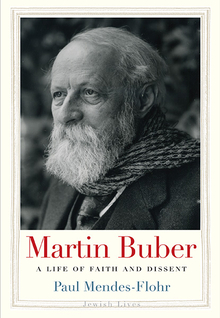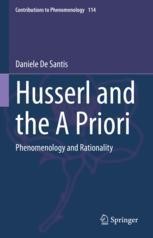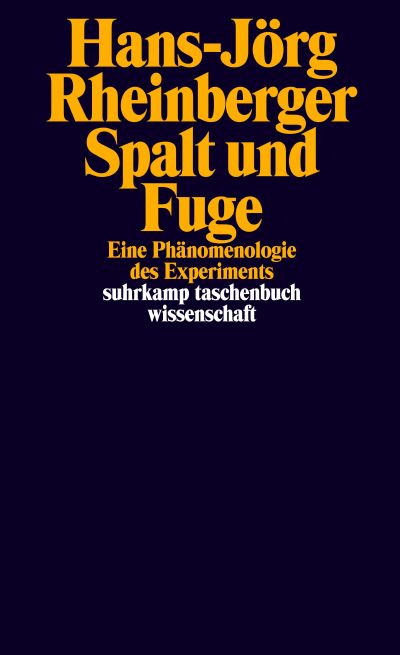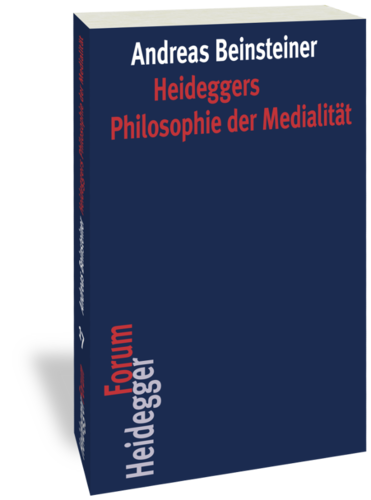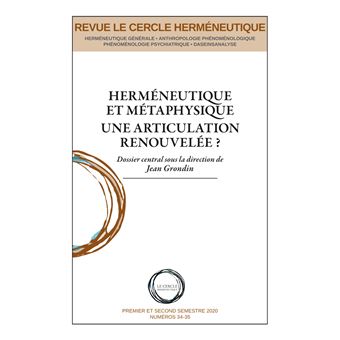 Herméneutique et métaphysique. Une articulation renouvelée
Herméneutique et métaphysique. Une articulation renouvelée
Revue Le Cercle Herméneutique, 34-35 (2020)
Le Cercle Herméneutique
2020
Paperback 23,00 €
208
Reviewed by: Elena Romagnoli (Scuola Normale Superiore –Pisa)
There is no doubt that hermeneutics today does not have the role of cultural koinè it enjoyed at the end of the last century. On the contrary, hermeneutical thought appears underestimated and misunderstood as fundamentally anti-modern. The rediscovery of the real essence of hermeneutics and the appreciation of its contemporary relevance requires that we critique several of its post-modern interpretations. This volume goes precisely in this direction. It is the product of a conference held on the 27th and 28th of September at the University of Montréal, where some of the most relevant scholars of hermeneutics aimed to rethink the relation between hermeneutics and metaphysics, traditionally considered antithetical.
Jean Grondin, the editor of the volume, immediately underlines that this signals a specific stance against those post-modern philosophers (Vattimo, Rorty, Ferraris), who have tried to read hermeneutics as “anti-metaphysical” or “post-metaphysical”, unbinding it from every “perennial structure” and underlining the heterogeneity of reality and languages with no possibility of a superior unity. These interpretations also differ, I can add, from Di Cesare’s conception of hermeneutics as “a-metaphysical” (Di Cesare 2013). The aim of this volume is to delineate a new way of connecting these two disciplines – a path already traced by Grondin’s fundamental works (Grondin 2004, 2013, 2019) – with the presupposition that metaphysics is only possible as hermeneutics just as hermeneutics is only possible as metaphysics.
As Jean Greisch notes in his contribution, this might appear as a “backward-looking operation” (18). Indeed, hermeneutics is based on the assumption of radical finitude and the centrality of history, which seems opposed to the metaphysical inclination to determine universal and perennial structures. However, the two most important heirs of Heidegger’s philosophy, i.e., Gadamer and Ricoeur, distanced themselves both from Heidegger’s critique of metaphysics and from post-metaphysical readings. Against the Nietzsche-Heidegger duo that criticizes metaphysics and claims its overcoming, the authors of this volume follow distinct paths that go in the same general direction: they try to show the intimate connection between hermeneutics and metaphysics. The relevance of this volume rests in this attempt to highlight some possibilities for the renewal of hermeneutics. At the same time, the contributors to this volume try to reassess the very concept of metaphysics, freeing it from exceedingly rigid interpretations and trying to harmonize metaphysics with contemporary needs.
The task of this volume is in this respect very ambitious and tackles two complex and variegated concepts, hermeneutics and metaphysics, both from historical and theoretical points of view. The risks of generalization or naiveté, sometimes incurred in the single contributions, is on the whole avoided. The different papers promote stimulating proposals that invite further development. In particular, the focus of the volume and its relevance consists in the fundamental aim just mentioned; namely, rethinking hermeneutics against its underestimation, an underestimation that derives from the association of hermeneutical thought with so called “weak thought” or with “new realism”. This accords with a recent recovery given to hermeneutics, in particular in the USA (George-Heyden, 2021), a path that could hopefully be developed in order to underline and exploit the import of hermeneutics with regard to contemporary questions. Paradoxically, its contemporaneity can be underlined only by reconnecting it with metaphysics: this is the fundamental challenge of this volume.
The contributions can be divided into three main parts: in the first, the authors (Greisch, Rodrìguez) try to rethink hermeneutics, while in the second, complementarily, the essays aim to renew metaphysics (Perrin, Beuchot). In the last part, the contributions focus on the main “hermeneutical thinkers” in order to see how they realize (Boutet, Jaran, Canullo) or trace (Vallée) a renewing of the relation between hermeneutics and metaphysics.
Rethinking Hermeneutics: Transcendence and Ontology
There are different ways to tackle the complex question of the relation between hermeneutics and metaphysics. Jean Greisch chooses a theoretical approach that moves from the conceptual analysis of the notions of “hermeneutics”, “metaphysics” and “transcendence”. He follows a thread that unites Dilthey, Rosenzweig and Heidegger, showing that they do not simply oppose metaphysics; rather, they stress the “meta” function of thought, which is a crucial element of metaphysics as such. Both Dilthey (in Introduction to the Human Sciences) and Rosenzweig (in The Star of Redemption) underline the need for a new understanding of metaphysics. The latter, moreover, talks not merely of philosophical anthropology, cosmology and theology, but rather of “meta-physics”, “meta-ethics” and “meta-logic”. Analogously, Heidegger talks of a “metaphysics of Dasein” that has its prerogative in the “transcendence of Dasein”, as it emerges in Kant and the Problem of Metaphysics and in the 1928-30 lessons in Freiburg and Marburg (Introduction to Philosophy, The Fundamental Concepts of Metaphysics, and The Basic Problem of Phenomenology). The author stresses that for Heidegger (as for Dilthey) Dasein is intrinsically “transcendent”. As the fundamental quote of Heidegger emblematically explains, Dasein, as a monad, has no door and no windows because it does not need them. This is not because Dasein does not need to “go beyond”, but because it is “already beyond”. Indeed, Heidegger focuses on the concept of the “hermeneutic of transcendence” in relation to the concepts of “freedom”, “essence of ground”, and “essence of truth”. Greisch affirms that all of us “engage” an explicit metaphysical questioning, because we all are fundamentally the play of “originary transcendence” (23).
Greisch follows this path, aiming to underline the need to keep transcendence as an intrinsic characteristic of Dasein: this necessarily requires the elaboration of a “metaphysics of Dasein”. Moving from the strict connection between metaphysics and Dasein, reconnecting to a terminology used by Ricoeur (in Réflexion faite), he focuses on the double structure that characterizes metaphysics: expansion [enlargement] (with Aristotle’s refutation of Parmenides that shows the unification of the attributes in ousia) and hierarchisation [hiérarchisation] (with Plato’s discourse on the five categories of same, other, being, rest and movement). In this same direction, the author refers to Stanislas Breton, who, in Reflexion sur la function méta, analyses three aspects of the “meta” function, and which become four in Greisch’s own account (metaphor, metamorphosis, metastasis, metabolism). These issues of the function “meta” are connected by the author with those of transcendence. Transcendence relates to “trans-ascendance”, an idealization without elevation, and to “trans-descendance”, as incarnation. The author explains this structure by drawing a diagram that shows how the vertical axis (consisting of trans-ascendance and trans-descendance), intersects with the horizontal axis, encompassing the directions of “trans-possibility” (understood as the extension of Dasein into the future, with reference to Heidegger’s “project”) and “trans-passibility” (understood as excess and not as mere constriction, like Heidegger’s “thrownness”).
Ramon Rodrìguez’s contribution focuses on another fundamental pair of concepts, often considered opposites: historicity (the leading concept of the nineteenth century, indicating what is essentially becoming and situated in a specific context) and ontology (the emblem of perennial structures). The author analyses Gadamer’s conception, which has often been misinterpreted as “historicist”, with the intent to underline that, on the contrary, Gadamerian thought must be considered opposed to historicism [Historismus]. He thus reads Gadamer as capable of thinking a new way forward not only for hermeneutics, but also for metaphysics, by conceiving the concept of history in connection with truth.
At first glance, Gadamerian hermeneutics might appear clearly distinct from metaphysics, as several post-metaphysical thinkers claim. First of all, hermeneutics focuses on the concept of the “radical finitude” of the human being: only on that basis can every relation between Dasein and the world be understood. In this respect, we are in front of a thought that rejects every globalizing or exhaustive concept of existence. Secondly, hermeneutics opposes presence, which is characteristic of the structure of essence and being in metaphysics, with “the happening of the event [Geschehen]”. Hermeneutics in fact aims to think the constant motility and openness of understanding [Verstehen]. Despite this fundamental claim, Rodrìguez determinately claims that it is possible to talk of a “hermeneutical philosophia prima” (42).
The author aims to stress the relevance of Gadamer’s conception of history for a correct understanding of his conception of language. Analyzing the second part of Gadamer’s Truth and Method, he shows Gadamer’s intent to criticize historicism as the tendency, I claim, to historicize everything except the very subject who understands the historicized content. In opposition to this idea, Gadamer points to the relevance of tradition (as Überlieferung, and not as monolithic tradition, as the author correctly stresses). History is a specific spatial-temporal context where Dasein is situated and where comprehension begins. It is remarkable that here the author underlines Hegel’s influence over Gadamer’s philosophy. However, this fundamental reference is not fully developed. It might be relevant to analyze how Gadamer develops the insights of Hegel’s philosophy in contraposition to historicism, pointing to the fundamental issue of the connection between history and truth without returning to the concept of “absolute spirit”. This emerges not only in Truth and Method but also in a previous essay titled The Problem of Historical Consciousness. It is also notable for the relation with metaphysics that Gadamer often defines himself as a defender of the “bad infinite”.
Rodrìguez wants to show that only by focusing on this issue it is possible to correctly understand the famous and controversial Gadamerian saying “being that can be understood is language” (Gadamer, 1960). This sentence must be conceived neither as a classical metaphysical formulation, namely that language is the supreme being – in this respect I claim that it is important to stress that Gadamer himself returned to these questions, rethinking the role of language in relation to its limits (as the essay on The Limits of the Language testifies) – nor as a post-metaphysical complete absence of truth in the multiplicity of languages that lack any unity. The author claims that we need to understand language as the fundamental medium of our historical being (45). Passing from Geschichtlichkeit to Sprachlichkeit means that the famous concept of the “fusion of horizons” (between the interpreter and the text, between different cultures) is only possible in the communal horizon of language. When it comes to this fundamental claim, I think it is crucial to stress that speaking of language as a medium does not mean it is an instrument [Mittel], but rather is a center [Mitte] where the human being is inevitably situated, as Gadamer affirms with reference to Hegel.
At the end of his contribution the author aims to restate his claim: it is possible to conceive of a “philosophia prima” in Gadamer, but this does not imply the recovery of the idea of a final foundation of philosophy. The connection between being and history constitutes a path of Dasein open to experience and connected with its transcendence (as Heidegger understands it). It is my belief that this could be explained as the infinite possibility of the finite. In this direction, Rodrìguez stresses that there is no reference to an “onto-theological” conception, with a hierarchical classification of being. As the concept of the “classical” implied by Gadamer testifies, his conception of history does not entail an atemporal vision, but rather the way in which the past is able to talk to the present: “This atemporality is rather a way of historical being” (51).
Rethinking Metaphysics: Physis and Analogy
The next two contributions in the volume follow a complementary path, renovating the concept of metaphysics in order to show its compatibility with contemporary hermeneutics. Christophe Perrin’s paper inspects the conflictual relation between physics and metaphysics, aiming to underline the impossibility of doing away with metaphysics. In light of this, not even hermeneutics can surpass metaphysics: what must be done is to establish a ground for a “metaphysical hermeneutics”. The author moves from the famous assertion ascribed to Newton to “guard oneself against metaphysics”. This represented a fundamental warning to the positivists and, in general, for those thinkers who tried to overcome metaphysics. The author tries to show that the assertion does not mean a mere critique of metaphysics, but rather a “sage memento” (62), by appealing to the classical argument that criticizing metaphysics necessarily implies doing metaphysics. In this respect, the two disciplines – i.e., physics and metaphysics – appear strongly connected, despite having been considered separate since the modern age, with the former being focused on corporeal entities and the latter on the higher causes that account for the very possibility of those entities (God, the cosmos, the soul). The author follows this path by analyzing the conception expressed by Newton, showing that the exhortation to “guard oneself against metaphysics” does not refer to something external one must drive away, but rather to an intrinsic tendency that is always present in the physicist himself, a “metaphysical drive” that may lead physics to lose its purpose and dissolve in the “curiosity” mentioned by Aristotle. In this respect, the physicist must follow the advice presented in Voltaire’s Candide: cultivate your garden. In sum, Perrin aims to show the hermeneutical circularity that inhabits metaphysics: “In order to understand metaphysics we must think, but in order to think we must understand metaphysics” (68). The somewhat rhetorical conclusion of the author is that the perpetual stimulus to think metaphysically helps us understand that not even hermeneutics can escape the metaphysical temptation.
Mauricio Beuchot also engages with the concept of metaphysics in order to propose its reformulation. He focuses on ontology in particular, claiming, contra Vattimo, that hermeneutics without ontology would be “acephalous”. The author underlines that both Gadamer and Ricoeur – the two fundamental hermeneutical thinkers of the contemporary world – developed a kind of ontology (an ontology of art in Gadamer, an ontology of the self in Ricoeur). For the author it is possible to rethink metaphysics only by elaborating a concept able to face the objection raised by Nietzsche and Heidegger. In this direction, the author develops the concept of “analogical ontology” proposed by Paul Gilbert. He focuses on the role of analogy, moving from Aristotle’s intuition that “being can be said in many ways”. Analogy – as developed by Pseudo-Dionigi in the three phases of negation, affirmation, and excess – aims to affirm that God’s being neither coincides with that of other entities nor wholly transcends it; rather, it is analogically related to it, encompassing both similarity and differentiation. An analogical ontology makes use of the concept of symbol as what mediates between the universal and the particular. In light of this, the human being is a symbol of God in a way that is neither univocal (as in classical metaphysics) nor equivocal (as in post-modern thought). These categories are of course too schematic, but they are directed at exposing the author’s proposal: “The human is the metaphor of being in a metonymical way, as a part that is sign of the whole” (77). The focus is an ontology of man that follows Heidegger’s conception expressed in his fundamental Ontology: Hermeneutics of facticity. The author wants to present an intermediate way. The last part of the essay appears to be less cogent, for the author tries to show the need for this concept of metaphysics by considering the metaphysical tendency as a sort of “pharmakon” for the modern melancholia that would be aggravated by post-metaphysical thinking. The aim of analogical ontology should thus be ethical and political. It should be a concept able to take into account the motility of the modern philosopher and to answer Nietzsche’s and Heidegger’s critiques: an ontology that is both universal and concrete, based on the historical situation of man.
Dilthey, Heidegger, Gadamer, Ricouer: “Hermeneutical Metaphysics?”
Rudolf Boutet’s contribution aims to stress the connection between metaphysics and hermeneutics moving from the tendency, common to Gadamer and Ricouer, to hearken back to the metaphysical tradition. This approach, the author stresses, is not merely a kind of “history of philosophy”, but rather a “creative interpretation of metaphysics”. This is particularly evident in Ricouer’s The rule of metaphor where he recovers the Aristotelian conception of being with the aim of giving a metaphysical basis to the internal dynamism of being concealed by the historical assimilation of being to substance. He addresses the Aristotelian doctrine of being conceived of as a “poetic of being”: being reveals the metaphor as an actualization of being (Ricouer, 1975). Analogously, Gadamer concludes Truth and method by making referencing to the Platonic-Plotinian conception of beauty as the emblem of the manifestation of truth. Boutet claims that this is not just a historical reference but rather a movement that keeps together philosophy and history. He specifically analyses Ricouer’s conception of time developed in Time and narrative. Ricouer deals with the aporia of time, that is, time is at the same time both plural and unique. The author correctly affirms that this analysis is the basis for Ricouer’s conception of history and its criticism of both utopianism (that paralyses action) and the mere restatement of past structures. This approach to tradition is what the author defines as a “creative interpretation” of metaphysics that does not come down to a merely subjective decision. It is rather “an interpretation that, in order to be adequate to the object, decides to produce a sense” (91). The fundamental claim is to rethink the creation of sense through a symbolic interpretation connected to both the metaphorical and conceptual levels. Just like Beuchot proposes an intermediate way via analogy, Boutet claims a mediation between the metaphysical issue and the multiplicity of reality.
François Jaran’s paper contributes to the general aim of the volume by focusing on how hermeneutics is able to tackle fundamental metaphysical questions such as the existence of the external world. In particular he wants to show that Heidegger inherits the “resolution” of this problem from Dilthey, despite his critique of Dilthey’s philosophy. The author contends that the intent animating Dilthey’s thought is to “explain life with itself”. This informs his critique of metaphysics and in particular its separation between man and world, such as theory and praxis, as it appears in the Introduction to the Human Sciences. Even though Dilthey strongly criticizes metaphysics (Dilthey, 1924), the author affirms that it is possible to talk of a “Diltheyan ontology” (101). According to the author, the concept of Erlebnis (crucial for Dilthey) should constitute the analogy of being. In fact, for Dilthey, the problem of the justification of the external world does not exist, because man is naturally situated in this world, as it emerges from his lived experience. From here, the author comes to affirm that, for Dilthey, Erlebnis is substance and the external world its accidents. This entails that the external world is given immediately to human beings. In strong connection with this, Dilthey refers to the concept of Innewerden (to become aware) that perfectly fits the relation between man and reality. In this direction Jaran claims: “Erlebnis is a primitive datum, whose seizing gives access to the more fundamental reality” (104). The author also claims that the concept of Innenwende is at the center of Heidegger’s and Gadamer’s conception, as a sort of key word of hermeneutics – I would rather claim that this cannot be the case for Heidegger nor for Gadamer, even though they inherit Dilthey’s conception of the relation between human and world. Indeed, they distance themselves from a philosophy of mere interiority based on Erlebnis, opposing to it, as is well known, the concept of Erfahrung.
Dilthey’s claim is undoubtedly a rehabilitation of a kind of experience where there is no distinction between the perceiver and the perceived; as such, he is critical of the traditional metaphysical conceptions that separate man and world. So the author aims to stress the “metaphysical aspect” present in Dilthey’s philosophy: “It is a philosophy that criticized the so-called ‘metaphysical speculation’, but it is however itself a metaphysical speculation” (106). Using this interpretative key, Jaran stresses that this is the main thread that leads to Heidegger, in particular referencing paragraph 43 of Being and Time, defined by Jaran as one of the “most metaphysical” paragraphs of Heidegger’s book. Heidegger in fact, following Dilthey, affirms that there is no separation between man and the world, because Dasein is co-originary with the world: it is not possible to think the world and Dasein separately; in fact Dasein gibt es (is given) together with the world. Thus, the author wants to stress that both Dilthey and Heidegger provide a solution to a crucial metaphysical problem. One last remark: following this parallelism, it would seem that Heidegger’s Dasein has the same role as Dilthey’s Erlebnis, being (in the author’s view) the substance whose accidents make up the world. I think this could be problematic and could make us lose sight of the claim of Heidegger’s philosophy (the role of Dasein as a peculiar being and not at all as being), thereby implying an existentialist reading of Dasein.
Marc-Antoine Vallée’s intent is to investigate whether hermeneutics has the “sufficient resources” to elaborate a metaphysics, conceived in the widest possible sense as “a reflection on beings and on its principles” (114). The author has a prudent (and sharable) vision, claiming that in the main contemporary hermeneutical thinkers, namely Gadamer and Ricouer, there is only the basis for a further development of “metaphysical hermeneutics”. The author rightly wants to oppose Caputo’s criticism of Gadamer’s hermeneutics (Caputo, 1987) as still connected with metaphysics, proposing a “radical hermeneutics” that intertwines with deconstruction and refuses every metaphysical problem. On the contrary Vallée claims that we must recover the relation of Gadamer and Ricouer to the main metaphysical questions. He investigates two central metaphysical topics in Truth and method, namely, the role of language and the connection of beauty with truth. I think, however, that it could be useful to remind ourselves that, as far as the question of art is concerned, Gadamer has notably rethought the Platonic-Plotinian conception of art in a more “anthropological” direction, as we see in the fundamental essay The Relevance of the Beautiful. Vallée also focuses on Gadamer essay Phenomenology, Hermeneutics, Metaphysics, in which the author affirms that “phenomenology, hermeneutics and metaphysics are not different philosophical points of view, but rather the same expression of the philosophical act itself” (116). Analogously, the author indicates three possible metaphysical directions in Ricouer: the metaphysics of symbol (in Existence and Hermeneutics), the metaphysics of text (The Rule of Metaphor), and the metaphysics of the self (Oneself as Another).
The author’s main claim is that these philosophers are not metaphysical in a traditional sense (as Descartes, Spinoza, Kant, and Hegel), but rather, following Grondin (2003), it is possible to talk of a “silent metaphysical dimension”. For Vallée, Gadamer and Ricoeur exhibit a sort of reticence to explicitly think metaphysically; moreover, there are some bases that prevent a complete development of a metaphysical conception. In fact, hermeneutics inherits the main claim of Heidegger’s thought as the openness of thinking and a refusal of every fundamental. From this point of view, going beyond the conceptions of Gadamer and Ricouer, hermeneutics could deal with a concept of “metaphysical rationality”. In his last remark, the author wants to recover the thought of Augustine, considered as a metaphysical thinker who set the stage for a “metaphysics of existence”. The message that emerges, I claim, is that, to promote hermeneutics nowadays, we need to recover a metaphysical conception, as proposed by Augustine.
The last article moves from Gadamer’s proposal in the above mentioned essay Phenomenology, Hermeneutics, Metaphysics, in which he claims that the question of metaphysics is “still open” in the contemporary age. Carla Canullo aims to show the intrinsic connection of metaphysics and hermeneutics by taking into account their etymologies. The two disciplines emerge in Greek philosophy: specifically, while metaphysics arises in Aristotelian thought in the aim of showing that being can be said in different ways, hermeneutics is conceived by Plato in his Ion, affirming that the poet’s interpretation is able to grasp the essence of reality. However, in modern metaphysics (since the Scholastics) being is thought in terms of a “fixed conception”, while hermeneutics is a discipline that allows for the openness of thought. In opposition to this conception, the author claims that since its birth, metaphysics represents a “second navigation” that moves from the investigations of natural beings to their essence. Since that time, metaphysics is always renovating itself. This can be confirmed by the term “meta” (already at the center of Greisch’s contribution) which, among different significances, means “between two”, i.e., the crack which metaphysics has always left open. Following the author’s argumentation, this implies that metaphysics is not a fixed discipline, but is rather in a constant, dynamic movement from and to physis – the movement expressed by the “meta” of metaphysics. On the other hand, hermeneutics, following the Greek “legein”, is connected with “collection”, keeping together. So, as metaphysics passes through physics, hermeneutics presupposes the need of “something” that must be collected: “Hermeneutics collects what the ‘meta’ prefix divides” (131). This recollection, however, does not imply the elimination of difference. The author affirms that metaphysics and hermeneutics mirror each other in a continuous work of renewal. This movement, which happens continuously, constitutes the emblem of the relation between the two, and can never arrive to an end.
Bibliography:
Caputo, John D. 1987. Radical Hermeneutics. Indiana University Press.
Di Cesare, Donatella. 2013. Gadamer. A Philosophical Portrait. Translated by Niall Keane. Indiana University Press.
Dilthey, Wilhelm. 1924. Die geistige Welt. Einleitung in die Philosophie des Lebens. Teubner. Translated by R.A. Makkereel, F. Rodi, Introduction to the Human sciences. 1989. Princeton University Press.
Ferraris, Maurizio. 2014. Introduction to New Realism. Bloomsbury.
Gadamer, Hans-George. 1960. Wahrheit und Methode, Mohr Siebeck. Translated by J. Weinsheimer, D.G. Marshall. 2004. Truth and Method. Continuum.
George, Theodore, Gert, Jan Van der Heyden (eds.). 2021. The Gadamerian Mind. Routledge.
Grondin, Jean. 2004. Introduction à la métaphasique. Presses de l’Université de Montréal.
Grondin, Jean. 2013. Du sens de choses. L’idée de la métaphysique. Puf.
Grondin, Jean. 2019. La beauté de la métaphasique. Essais sur ses piliers herméneutiques. Puf.
Heidegger, Martin. 1927. Sein und Zeit, Niemeyer. Translated by J. Stambaugh, 2010. Being and Time. State University of New York Press.
Ricouer, Paul. 1975. La métaphore vive, Éditions du Seuil. Translated by R. Czerny. The Rule of Metaphor. 1977. University of Toronto Press.
Vattimo, Gianni, Rovatti Pier Aldo (Eds.). 2012. The Weak Thought. SUNY Press.


